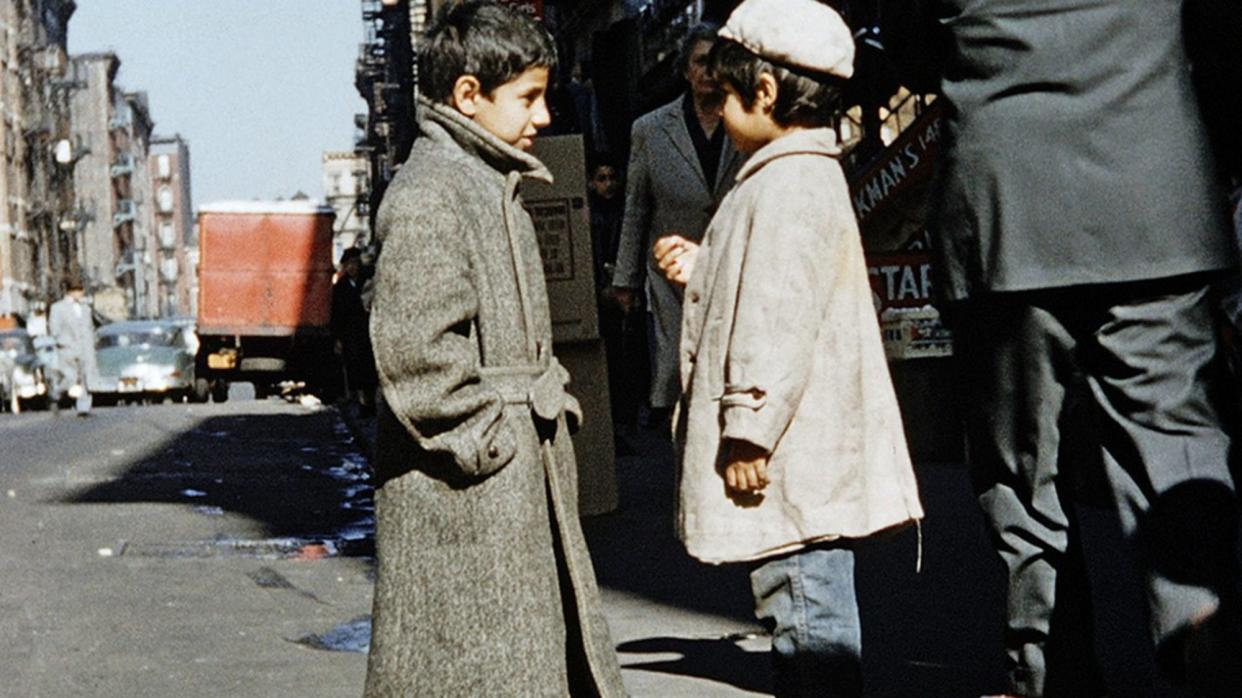MoMA Becomes Home to Ken Jacobs, Acquiring Over 200 of His Works

- Oops!Something went wrong.Please try again later.
Ken Jacobs is now immortalized as a Museum of Modern Art filmmaker.
The experimental Brooklyn-based filmmaker will now have a large collection at the Manhattan museum, making MoMA the singular repository of works of the moving-image artist. The Museum of Modern Art purchased films and videos created by Jacobs, with the titles joining the other 14 Jacobs works already housed at the museum.
More from IndieWire
Matthew Broderick Recalls John Hughes Calling His 'Ferris Bueller' Performance 'Boring'
Ryan Gosling Was Told by 'Notebook' Director He Had 'No Natural Leading Man Qualities'
Jacobs has credited his discovery of the movies to his youthful trips to MoMA in the late 1940s, recalling that “the Museum of Modern Art plunged me, when a teenager, into the unexpectedness of art.”
He added in a statement to IndieWire, “Eastern District High School in Williamsburg gave me a pass to MoMA, where I saw ‘Greed,’ Chaplin, Vertov. I’m delighted that MoMA is now acquiring my long life’s cine-output.”
For more than 50 years, MoMA has presented Jacobs’ own moving-image work in nearly every context and format, from the theatrical projection of 8mm, 16mm, and 35mm films to cutting-edge computer technologies of his own gallery installations, including “Nervous System” and “Nervous Magic Lantern” performances, and screenings in the Museum’s Sculpture Garden.
Jacobs, who turned 90 on May 25, devoted his seven-decade career to the aesthetic, social, and physiological critique of projected images that he manipulates across formats.
“As he celebrates his 90th birthday this month, Jacobs is one of cinema’s living treasures, a filmmaker who for the past half-century — together with his partner and collaborator Florence Jacobs — has reawakened the sense of awe and mystery that 19th-century audiences must have felt in confronting motion pictures for the first time,” Joshua Siegel, curator in MoMA’s Department of Film, said.
Siegel oversaw the Museum’s acquisition and has organized numerous exhibitions of Jacobs’ work, including (as co-curator) the landmark 2004 series of live performances and screenings “Ken Jacobs: Illusions and Improvisations.”
A self-taught filmmaker, Jacobs studied painting with Hans Hofmann at the Art Students’ League of New York in the early 1950s before picking up a movie camera to make a series of New York City street burlesques with the iconic performance artist Jack Smith, including the once-censored “Blonde Cobra” (1963).
His first film, “Orchard Street” (1955), captured the tenements of the Lower East Side that reminded Jacobs of his childhood in Depression-era Williamsburg.
Though not exclusively part of the new collection, “Orchard Street” has been restored by MoMA and will be presented later this year in the Museum’s Gallery 411, opening on November 3, 2023, together with more recent work, to introduce and reintroduce art-goers to Jacobs’ career.

Jacobs later shifted into more politically charged work, culminating in his no-budget magnum opus “Star Spangled to Death,” a vision of American exceptionalism, greed, and intolerance that he built from found footage (Hollywood movies, cartoons, newsreels, and TV shows), jingoistic songs, and performances by Jack Smith and Jerry Sims, interwoven with his own prose. The filmmaker began assembling this material in 1957, expanded and updated it over the next half-century, and completed it in 2004 as a six-and-a-half-hour work.
Jacobs blurs the worlds of 2D and 3D space across media to create his own kind of abstract expressionism. He’s long been inspired by the paintings of Jackson Pollock and Joan Mitchell. This is evident in another work that will be on view in Gallery 411, “Joan Mitchell: Departures” (2018), one of Jacobs’ self-described Eternalisms, which explores surface, depth, stasis, and movement.
In addition to exhibiting Jacobs’ films, the Museum has also restored several key works beyond “Orchard Street,” including “Tom, Tom, the Piper’s Son” (1969), “Urban Peasants” (1975), and “Perfect Film” (1985).
“With this major acquisition of preprint elements, films, and digital works, MoMA will continue to preserve and exhibit Jacobs’ art for future generations,” MoMA curator Siegel said.
Best of IndieWire
Sign up for Indiewire's Newsletter. For the latest news, follow us on Facebook, Twitter, and Instagram.

